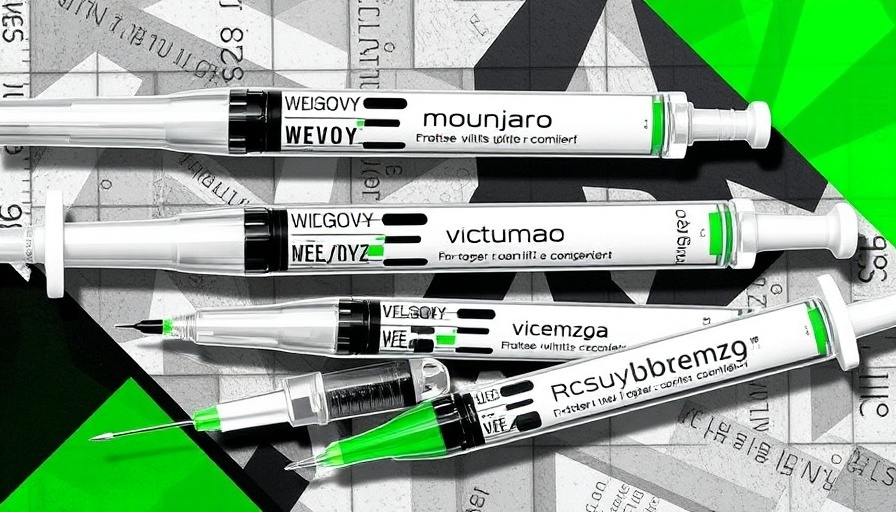
The End of the Ozempic Shortage: A New Era for GLP-1 Drugs
The FDA has officially declared the shortage of semaglutide, the active ingredient in diabetes and weight-loss medications Ozempic and Wegovy, over. This update marks a significant turning point for both healthcare providers and the pharmaceutical industry, as the demand surge that once propelled Novo Nordisk to unprecedented market heights transitions into a new landscape of available treatments.
Implications for Patients and the Pharmaceutical Landscape
This announcement is more than a bureaucratic update; it signals potential upheavals within a market that has witnessed the rise of a myriad of compounding pharmacies selling cheaper, off-brand substitutes during the shortage. As these pharmacies face the end of their temporary influx in business, a question looms: how will they adapt when the large manufacturers can meet demand?
Over recent years, compounded versions of semaglutide became widely accessible through telehealth companies and local pharmacies. Patients, often disillusioned by high costs and insurance obstacles regarding the branded versions, found alternatives that sometimes cost under $100, far below the $1,000 a month charged for the FDA-approved products. However, this rapid growth was not without consequences. Compounded drugs have faced scrutiny due to safety concerns tied to poor regulation and the risks of dosing errors.
A Market of Questions: Safety and Legality in Compounding
The regulatory environment surrounding compounded semaglutide products is complex. While compounding pharmacies are tasked with meeting specific patient needs during shortages, these entities have been associated with over 350 adverse events, invoking alarm among healthcare providers and patients alike. For example, major health logs have indicated a steep rise in reports of overdoses linked to users attempting to draw doses from vials rather than using the pre-filled pens common in regulated forms of semaglutide.
Given this context, can we genuinely trust compounded versions, especially when creating a legal gray area for smaller pharmacies? Once the FDA removes semaglutide from the shortage list, larger outsourcing facilities are legally prohibited from manufacturing compounded drugs. However, smaller pharmacies may continue operations if they justify individual prescriptions. This poses an interesting dilemma—while necessary for continued treatment for some patients, could this loophole lead to a resurgence of unsafe practices?
Industry Response: Will Novo Nordisk Cripple Compounding?
As professionals within the healthcare industry wise up to the implications of compounded semaglutide, Novo Nordisk is seeking regulatory action from the FDA to limit compounding practices. Citing safety risks and complex formulations that challenge compounding capabilities, they aim to classify semaglutide under the Demonstrable Difficulties for Compounding Lists.
These proposed restrictions are crucial, especially following incidents where unauthorized mixtures have led to severe health complications, reducing the credibility of compounded medications. As reported by Khetpal, the FDA's doubts—illustrated through mounting adverse event reports—compound the challenges patients face when seeking effective GLP-1 therapies like semaglutide.
Looking Ahead: The Future of Obesity Treatment in the U.S.
The situation surrounding semaglutide not only reflects current market dynamics but also underscores broader systemic issues within medication access and affordability. As we move forward, it's vital to consider innovative solutions: Could Medicare leverage its bargaining power to negotiate better prices for medications? Might it adopt a subscription model for GLP-1 treatments similar to models used for chronic hepatitis C therapy?
Ultimately, the industry stands at a crossroads. The resolution of the semaglutide shortage surely achieves a critical goal of enhancing patient access, while also shining a light on the importance of safety regulations and the ethical standards organizations must maintain when it comes to patient health.
Conclusion: Engaging with Emerging Healthcare Realities
As executives and decision-makers in various industries, including healthcare and biotechnology, it’s essential to stay informed and engaged with these emergent realities surrounding GLP-1 medications. The end of the Ozempic shortage presents both challenges and opportunities—providing a ripe environment for dialogue and innovation in managing chronic conditions and ensuring patient safety.
 Add Row
Add Row  Add
Add 




Write A Comment